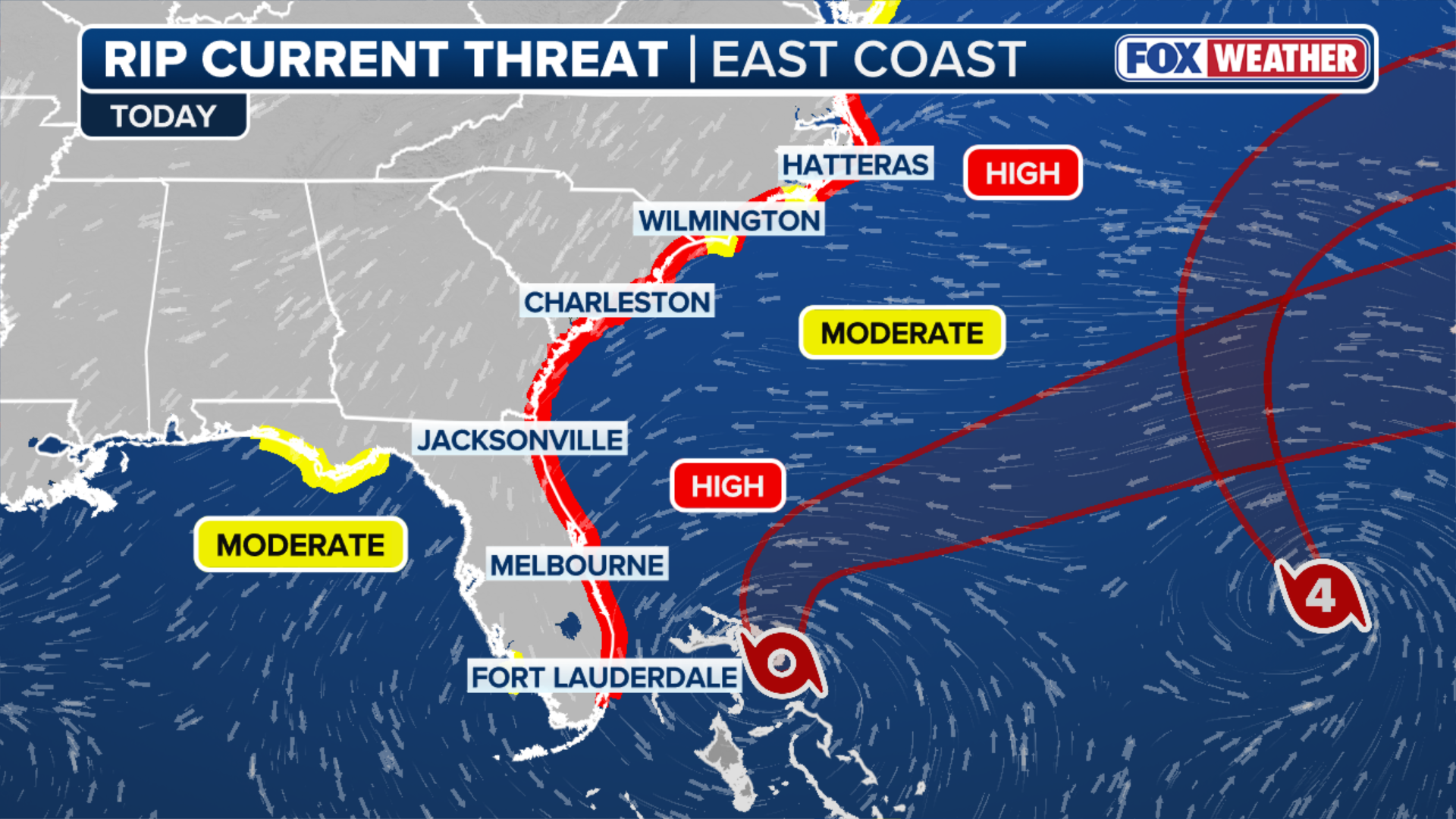Hurricanes Humberto, Imelda create deadly rip currents, trigger flood threat for US East Coast
The Volusia County Sheriff's Office in Florida reported that a 51-year-old man from "out of state" drowned on Saturday after he was pulled out into the ocean by a rip current and couldn't make it back to shore.
Florida feeling the effects from Tropical Storm Imelda
Despite not making landfall in the U.S., the effects from Tropical Storm Imelda are being felt along the coast in Florida. FOX Weather Meteorologist Michael Estime has the latest on the conditions from Melbourne Beach on Sept. 30, 2025.
VOLUSIA COUNTY, Fla. – The National Hurricane Center (NHC) is warning people along the East Coast of the U.S. about life-threatening rip currents this week, which are being produced by swells from both Hurricane Humberto and Hurricane Imelda churning nearby in the Atlantic.
That comes as the Volusia County Sheriff's Office in Florida reported that a 51-year-old man from "out of state" drowned on Saturday after he was pulled out into the ocean by a rip current and couldn't make it back to shore.
The National Weather Service has issued rip current risks for beaches along almost the entire East Coast from the Gold Coast of Florida to Maine due to swells generated by both tropical threats.

(FOX Weather)
A high rip current risk is in effect from Fort Lauderdale, Florida, through the New Jersey shore in the mid-Atlantic. Moderate and low rip current risks cover the south shore of New York's Long Island through Maine.
In addition, High Surf Advisories are in effect through Thursday from the Outer Banks of North Carolina down to eastern Florida, covering more than 800 miles of coastline. Areas under these advisories will see large breaking waves of 7–12 feet.
Local NWS offices have also issued Small Craft Advisories for much of the same areas along the East Coast, warning inexperienced boaters and mariners operating small boats to stay out of the water due to rough waves and gusty winds.
WHAT IS A RIP CURRENT AND HOW TO SURVIVE ONE
The Volusia County Sheriff's Office emphasized the dangers of swimming on unprotected beaches.
"Swimming in the ocean is not recommended right now. But anytime you’re in the water, remember to swim in front of a staffed lifeguard tower for safety."
How to survive a rip current
Do you know what to do if you find yourself caught in a rip current while swimming? Swim instructor and owner of Swim With Gills Christina Gillin-Theiss joined FOX Weather on Wednesday from Jupiter Island, Florida, to explain how you can stay safe and survive if you’re struggling in the water.
The NWS said swells from Hurricane Humberto will create those same life-threatening rip currents for parts of the northern Leeward Islands, the Virgin Islands, Puerto Rico and Bermuda through much of this week.
Rip currents are strong, narrow currents that move away from the shore and out to sea at high speeds.
"Rip currents can sweep even the best swimmers away from shore into deeper water," the NWS office in Mount Holly, New Jersey, wrote on Monday.
Officials emphasized the importance of heeding warnings at local beaches and consulting local weather offices for the latest forecast.
Homes along North Carolina Outer Banks prepare for large swells from Hurricane Humberto
Construction crews piled sandbags around a home in Buxton on North Carolina's Outer Banks ahead of expected 9-12 foot waves caused by swells from Hurricane Humberto churning in the Atlantic.
Both tropical systems are also bringing coastal flood concerns to the Outer Banks of North Carolina. The same swells and onshore flow from both Humberto and Imelda that are creating the rip current threat will also bring coastal flooding to the Outer Banks.
Coastal Flood Advisories and Coastal Flood Warnings have been posted for the region through Friday.
SEE IT: NORTH CAROLINA HOUSE COLLAPSES INTO ATLANTIC OCEAN, 12TH IN 5 YEARS ALONG OUTER BANKS

(FOX Weather)
According to the FOX Forecast Center, strong winds out of the northeast will pick up by midweek, helping drive those elevated waves into the North Carolina shoreline.
More beach erosion is possible for North Carolina after large waves from Hurricane Erin and a non-tropical coastal storm in mid-September impacted shorelines along the Outer Banks.





